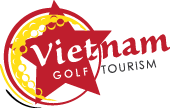The Philippines has joined forces with Brunei, Cambodia, Indonesia, Laos, Malaysia, Myanmar, Singapore, Thailand, and Vietnam to introduce a groundbreaking ASEAN visa initiative aimed at revolutionizing travel across Southeast Asia. This unified visa system is designed to simplify cross-border movement, making it easier for tourists to explore multiple ASEAN countries under a single authorization. By streamlining visa procedures, the initiative seeks to boost tourism growth, enhance regional cooperation, and position ASEAN as a more competitive and attractive destination in the global travel market. This collaborative effort marks a significant step toward deeper integration of ASEAN’s tourism sector, promising enriched experiences for travelers and stronger economic benefits for member nations.
The idea recently gained renewed momentum at the SKIFT Asia Forum 2025 held in Bangkok, where tourism leaders emphasized its potential to transform ASEAN into a truly seamless travel destination. The initiative aligns closely with ASEAN’s tourism motto, “A destination for every dream,” reflecting the region’s goal to present itself as a cohesive entity showcasing diverse natural landscapes, rich cultural heritage, and renowned hospitality.
Implementing such a visa system would address longstanding challenges related to cross-border mobility within Southeast Asia, making travel more convenient and encouraging tourists to explore multiple countries during a single trip. This approach is seen as an ambitious yet achievable milestone that could significantly enhance the region’s attractiveness to international travelers. The Philippines is expected to play a pivotal role in advancing this agenda as it prepares to host ASEAN summits and tourism forums in 2026.
While healthy competition among ASEAN nations remains important for innovation and destination differentiation, industry experts agree that enhanced collaboration holds greater promise for mutual growth. By working together, member countries can leverage collective strengths and present a unified front that elevates ASEAN’s standing in the global tourism market.
A prime example of productive cooperation within the bloc is the Philippines’ partnership with Thailand. Under a recently signed Memorandum of Cooperation, both countries launched the “Two Countries, One Destination” initiative. This program facilitates the exchange of best practices, supports joint marketing efforts, and promotes the diversification of tourism products. Thailand’s mature tourism infrastructure and marketing prowess complement the Philippines’ famed hospitality and varied attractions, creating a synergy that benefits travelers and stakeholders alike.
When considering what the Philippines uniquely offers within ASEAN, its rich cultural tapestry and welcoming spirit stand out. The country’s tourism experience is shaped by centuries of diverse influences — from Spanish colonial heritage to Chinese and indigenous traditions — resulting in vibrant festivals, flavorful cuisine, and warm interpersonal connections. Visitors can enjoy iconic dishes like roasted pork inspired by Spanish cuisine, sample noodle recipes influenced by Chinese cooking, or savor local beverages that reflect the country’s multicultural roots. This blending of cultures creates a travel experience that is multifaceted and deeply authentic. Many tourists report feeling transformed from mere visitors into part of an extended family, a testament to the enduring Filipino tradition of hospitality.
In recent years, the Philippines has adapted to shifting tourism dynamics by broadening its market focus. The country experienced a decline in arrivals from China due to external factors but responded by diversifying its visitor base. Efforts are now concentrated on expanding reach to emerging markets such as the Middle East, GCC nations, and India, while continuing to strengthen ties with established sources like South Korea, Japan, the United States, and Europe.
These diversification efforts have yielded impressive results, especially with growing tourism from the Middle East and GCC. Visitor numbers from these regions have surged, showing growth rates as high as five to eight times previous levels. The success is partly attributed to targeted programs that position the Philippines as a Halal and Muslim-friendly destination. This includes the certification of hotels and restaurants to meet Muslim travelers’ needs and the introduction of dedicated facilities such as the Marhaba Cove in the world-renowned Boracay Island, providing welcoming spaces for Muslim visitors.
Tourists from Australia and South Korea also continue to constitute vital markets. Enhanced air connectivity combined with increasing awareness of the country’s diverse offerings — from pristine dive sites and golf courses to adventure and beach tourism — drives steady growth. The Philippines’ ability to cater to a wide spectrum of traveler types, whether solo explorers, couples, families, or groups, remains a competitive advantage.
The archipelagic nation boasts thousands of islands, each with unique features and ready to accommodate visitors seeking varied experiences. This diversity ensures the Philippines can satisfy different travel preferences and maintain its position as a top destination within ASEAN and beyond.
The Philippines has partnered with Brunei, Cambodia, Indonesia, Laos, Malaysia, Myanmar, Singapore, Thailand, and Vietnam to launch a pioneering ASEAN visa, designed to simplify cross-border travel and transform regional tourism by boosting growth and cooperation across Southeast Asia.
As regional tourism stakeholders push for the ASEAN visa and stronger cooperation, the Philippines stands at the forefront, championing initiatives that promise to unlock the collective potential of Southeast Asia. By making border crossings easier and fostering collaboration rather than rivalry, ASEAN aims to become an even more compelling destination — a true “destination for every dream.”
The post Philippines Unites with Brunei, Cambodia, Indonesia, Laos, Malaysia, Myanmar, Singapore, Thailand, and Vietnam to Launch Pioneering ASEAN Visa Transforming Regional Tourism Dynamics appeared first on Travel And Tour World.
The article "Philippines Unites with Brunei, Cambodia, Indonesia, Laos, Malaysia, Myanmar, Singapore, Thailand, and Vietnam to Launch Pioneering ASEAN Visa Transforming Regional Tourism Dynamics" was originally published on https://www.travelandtourworld.com/news/article/philippines-unites-with-brunei-cambodia-indonesia-laos-malaysia-myanmar-singapore-thailand-and-vietnam-to-launch-pioneering-asean-visa-transforming-regional-tourism-dynamics/





